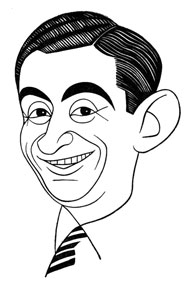THE BIRTH OF THE BLUES
 Came to this country at the age of four, the youngest of eight children. In Russia his father was a cantor. Here a kosher butcher.
Came to this country at the age of four, the youngest of eight children. In Russia his father was a cantor. Here a kosher butcher.Let Me Be a Troubadour,And I Will For Nothing MoreThan One Short Hour Or SoTo Sing My Song And Go.

